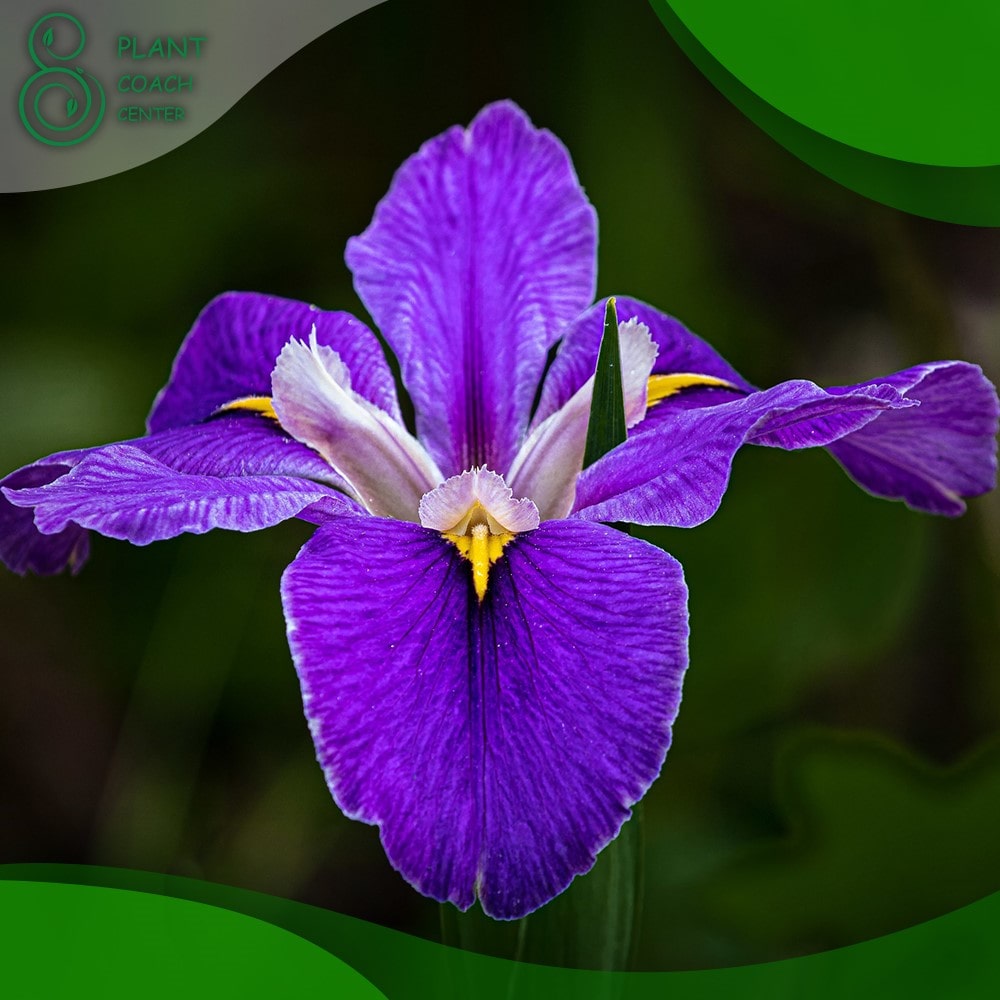When to Cut Back Iris Leaves
Taking care of your iris plants is essential for their health and beauty. One crucial aspect of iris care is knowing when and how to cut back the leaves. Properly trimming iris leaves enhances the plant’s aesthetics and promotes overall well-being.
In this comprehensive guide, we will explore the importance of cutting back iris leaves, understand the growth cycle of irises, identify signs of overgrown foliage, and delve into the factors influencing trimming timing. Additionally, we will provide you with best practices for trimming iris leaves and offer tips for aftercare and maintenance.
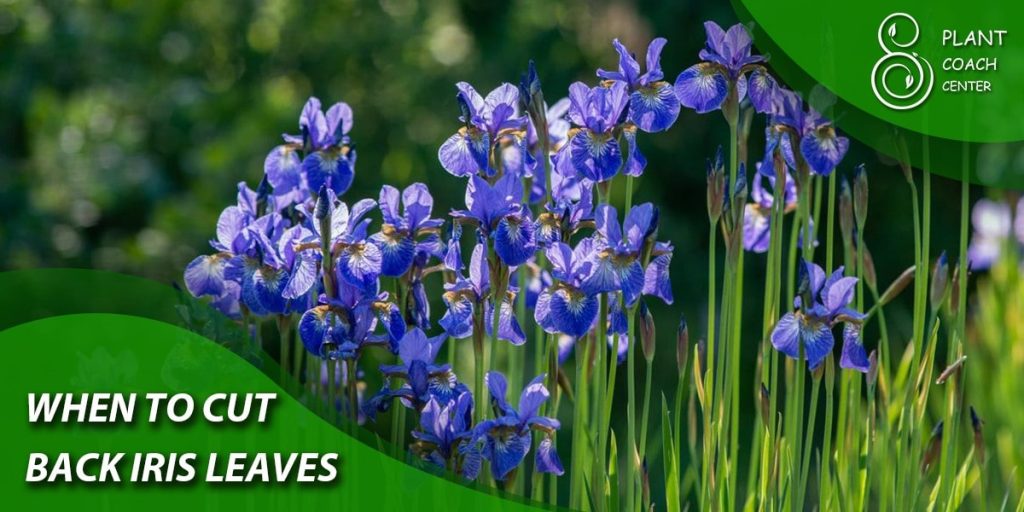
Understanding Iris Growth Cycle
Before we delve into the specifics of cutting back iris leaves, let’s familiarize ourselves with the growth cycle of irises. Irises go through different stages throughout the year, and understanding these stages will help us determine the appropriate timing for leaf trimming. Generally, irises have three main growth phases: dormancy, vegetative growth, and flowering.
During dormancy, which typically occurs during winter, irises enter a rest period. During this time, the leaves may appear withered or die back completely. However, it’s important to note that not all iris species experience the same level of dormancy. Some may retain their leaves, albeit with reduced vigor, while others may shed them entirely.
As spring arrives, irises transition into the vegetative growth phase. This is when new leaves emerge, and the plant accumulates energy for the upcoming flowering season. The foliage grows rapidly during this stage, contributing to the plant’s overall vitality.
Finally, the flowering stage occurs when the iris produces its vibrant blooms. This is the most visually appealing growth cycle phase but also requires special care and attention. Understanding these growth stages will help us determine the appropriate timing for cutting back iris leaves.
Signs and Symptoms of Overgrown Iris Leaves
Overgrown iris leaves can harm the plant’s health and aesthetic appeal. It’s important to identify the signs and symptoms of overgrowth to ensure timely trimming. Some common indications include:
- Excessive Height: If the iris leaves grow too tall, surpassing the typical height for the specific variety, it may be a sign of overgrowth. Overly long leaves can make the plant look untidy and may even impede the growth of other nearby plants.
- Dense Foliage: When iris leaves become overcrowded and densely packed, it can prevent sufficient air circulation and light penetration. This can create a favorable environment for diseases and pests to thrive.
- Yellowing or Browning: Overgrown iris leaves, such as yellowing or browning, may exhibit discoloration. This can indicate nutrient deficiencies, pest infestation, or other underlying issues.
- Reduced Flowering: If your irises have been flowering poorly or not at all, overgrown leaves could be the culprit. The excess foliage may divert energy from flower production, resulting in diminished blooms.
By recognizing these signs, you can promptly address overgrown iris leaves, ensuring your plants’ health and vitality.
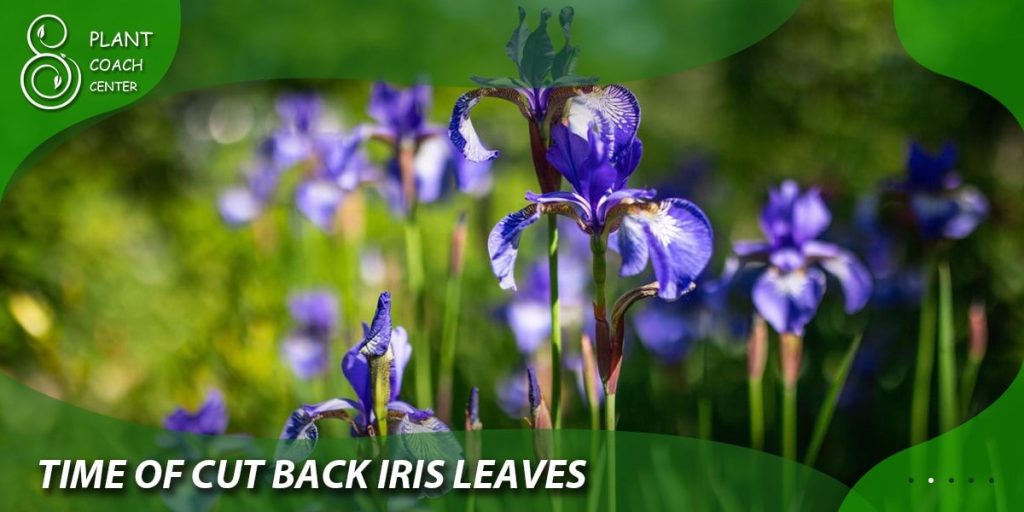
Factors Influencing the Timing of Iris Leaf Trimming
Determining the optimal timing for cutting back iris leaves depends on several factors. Let’s explore the key considerations that influence when to trim your irises.
1. Regional Climate and Weather Patterns
Your region’s climate plays a significant role in determining the timing of iris leaf trimming. Warmer climates with longer growing seasons may require more frequent and early trimming, as irises tend to grow vigorously in such conditions. Conversely, colder regions with shorter growing seasons may necessitate delayed or less frequent trimming.
2. Iris Species and Cultivar Characteristics
Different iris species and cultivars exhibit varying growth patterns and requirements. Some irises are known for their rapid growth and require more frequent trimming, while others may have slower growth rates and require less maintenance. Research the specific characteristics of the iris varieties to determine the appropriate timing for leaf trimming.
3. Individual Plant Health and Vigor
Your iris plants’ overall health and vigor can impact when cutting back the leaves. Suppose your irises are thriving and producing healthy foliage. In that case, it may indicate that they require trimming earlier in the season to prevent overgrowth. On the other hand, if your plants are struggling or have recently undergone stress, it may be advisable to delay trimming until they have regained their strength.
4. Environmental Considerations
Consider the environmental conditions surrounding your iris plants. Factors such as sunlight exposure, soil moisture levels, and competing vegetation can influence the growth rate of irises. Suppose your irises receive abundant sunlight and have access to ample nutrients. In that case, they may require more frequent trimming to control their growth.
By considering these factors, you can make an informed decision about when to cut back iris leaves, ensuring that the timing aligns with the specific needs of your plants.
Best Practices for Cutting Back Iris Leaves
Trimming iris leaves is a delicate process that requires careful attention to detail. Follow these best practices to ensure effective and proper leaf trimming:
Tools and Equipment Required
Before you begin trimming iris leaves, gather the necessary tools and equipment. These may include sharp and clean pruning shears, gardening gloves, disinfectant solution, and a container for collecting the cut foliage.
Preparing for Leaf Trimming
Inspect your irises and identify the leaves that require trimming. Look for signs of overgrowth, discoloration, or damage. It’s crucial to remove only the necessary foliage while preserving the healthy parts of the plant.
Step-by-Step Guide to Proper Trimming Techniques
- Timing and Frequency:
The ideal time to trim iris leaves is during the dormant period or just before the new growth emerges in spring. However, this can vary depending on your region and the specific growth patterns of your irises. Aim to trim the leaves when they have reached a manageable height but have not yet hindered the growth of neighboring plants.
- Correct Height for Trimming:
When cutting back iris leaves, it’s important to leave a certain length of the foliage intact. Trim the leaves to approximately 6-8 inches above the ground, ensuring you do not remove too much or too little. This length allows the plant to maintain sufficient photosynthetic capacity and supports healthy regrowth.
- Trimming Near Flowering Period:
Avoid heavy pruning of iris leaves just before or during the flowering period. Trimming during this time may compromise the plant’s ability to produce robust blooms. Instead, remove only dead or damaged leaves to promote better aesthetics.
- Removing Dead or Damaged Leaves:
Inspect your iris plants for dead or damaged leaves and remove them promptly. Dead leaves detract from the plant’s appearance and can provide a breeding ground for pests and diseases.
Avoiding Common Mistakes
To ensure successful iris leaf trimming, be mindful of common mistakes that can harm your plants. Avoid trimming leaves too early in the season, as this can impede their ability to photosynthesize and gather energy for growth. Additionally, refrain from cutting back all the leaves at once, as this can shock the plant and hinder its overall development.
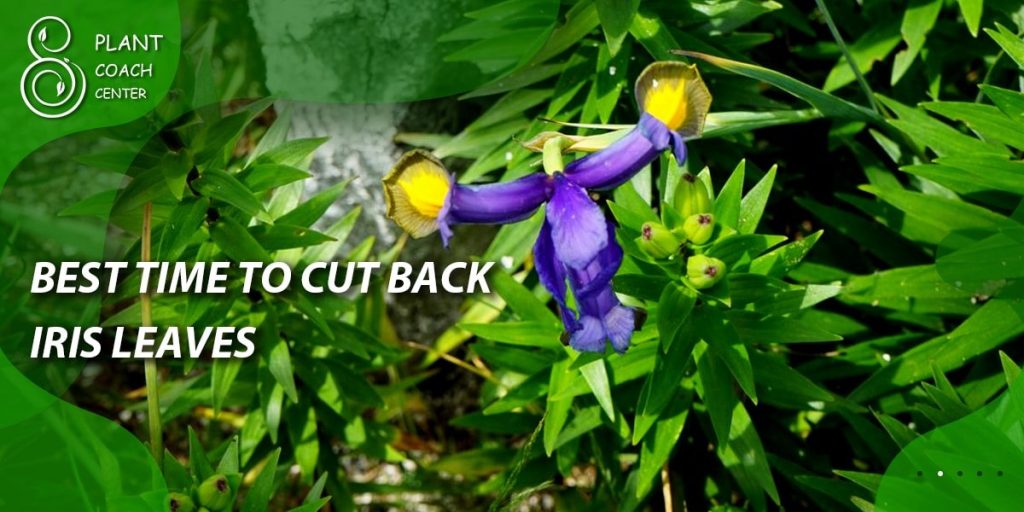
Potential Risks and Precautions
While trimming iris leaves is generally safe and beneficial, it’s important to be aware of potential risks and take necessary precautions. Here are some considerations to keep in mind:
1. Diseases and Pests Associated with Iris Leaves
Iris plants are susceptible to certain diseases and pests that can impact their health. Some common issues include fungal diseases like iris leaf spots, bacterial infections, and pest infestations such as iris borers. When trimming iris leaves, take care to minimize the spread of diseases by using clean and disinfected tools. If you notice any signs of disease or pests, consult a local horticulturist or extension service for appropriate treatment options.
2. Preventive Measures for Disease Spread
To minimize the risk of disease spread, avoid trimming iris leaves when wet, as this can facilitate the transmission of fungal spores. Removing any diseased or infected leaves carefully is also advisable, ensuring they are disposed of properly. Regularly inspect your iris plants for signs of diseases or pests and take prompt action to address any issues.
3. Protective Gear for Safe Trimming
When engaging in leaf trimming, it’s important to protect yourself. Wear gardening gloves to protect your hands from thorns, sharp edges, or potential irritants. Additionally, consider using protective eyewear to shield your eyes from debris while trimming.
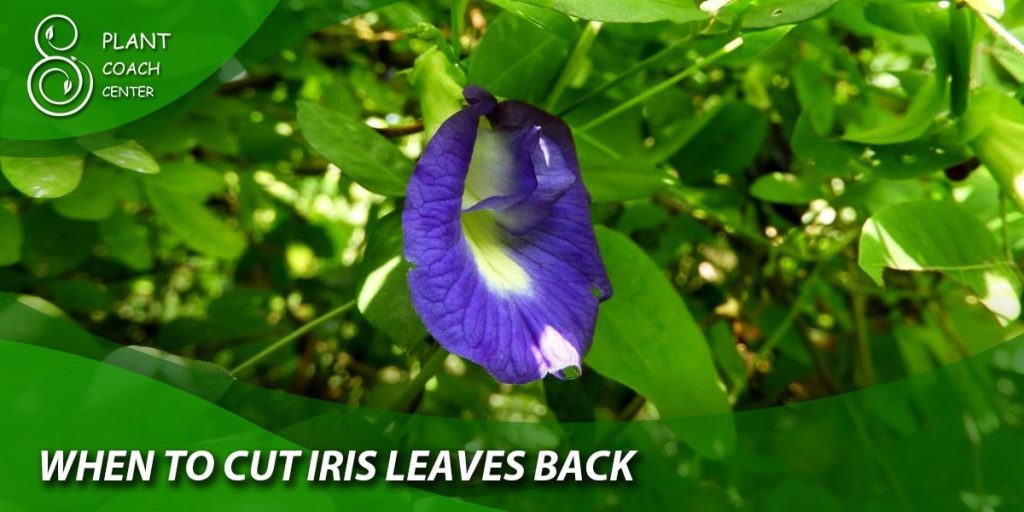
Aftercare and Maintenance
After trimming your iris leaves, it’s crucial to provide proper aftercare to support the health and growth of your plants. Here are some essential steps to follow:
1. Proper Disposal of Cut Leaves
Collect the trimmed leaves in a container for disposal. Do not leave the cut foliage around the iris plants, as it can create a favorable environment for disease development. Dispose of the cut leaves in a sealed bag or compost them, ensuring they are properly decomposed to prevent disease spread.
2. Post-Trimming Hygiene Practices
After handling the trimmed foliage, it’s important to practice good hygiene. Thoroughly clean your tools with a disinfectant solution to prevent the transmission of diseases from one plant to another. Wash your hands with soap and water to remove any potential irritants or contaminants.
3. Promoting Healthier Regrowth
To encourage healthy regrowth, provide proper care and maintenance to your iris plants. This includes regular watering, appropriate fertilization, and weed control. Adequate sunlight, well-draining soil, and good air circulation are also essential for the overall well-being of your irises.
4. Supplemental Nutrients and Watering
After trimming, consider providing supplemental nutrients to your iris plants to support their growth. Use a balanced fertilizer specifically formulated for irises and follow the manufacturer’s instructions for application. Additionally, ensure your irises receive sufficient water, especially during dry spells or hot weather, to prevent stress and maintain vitality.
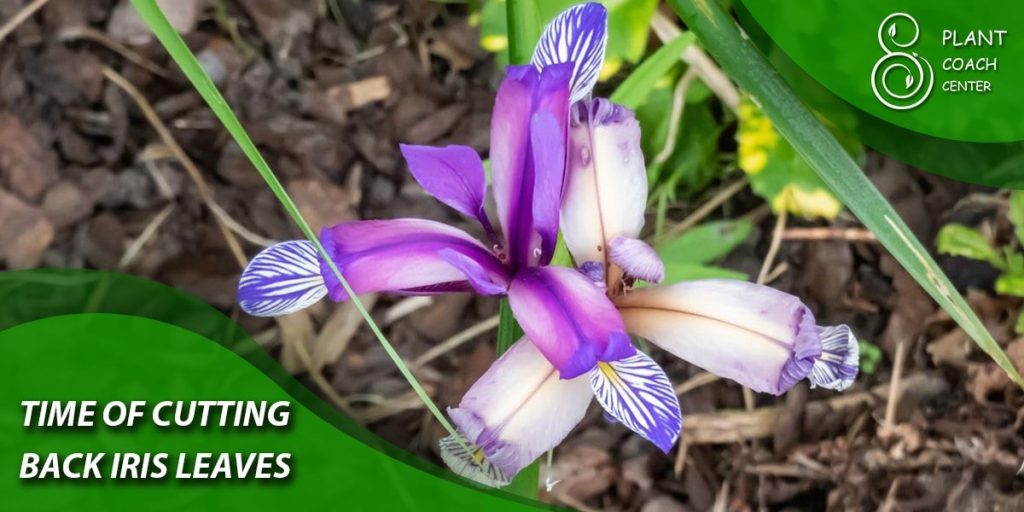
Other Considerations for Iris Leaf Management
Apart from regular leaf trimming, there are a few additional considerations related to iris leaf management:
Division and Transplantation Timing
Iris plants benefit from periodic division to rejuvenate their growth and flowering. However, avoid dividing and transplanting irises immediately after trimming their leaves. Allow the plants time to recover and regain strength before undertaking such actions. Late summer or early fall is generally the recommended time for iris division and transplantation.
Incorporating Iris Leaf Trimmings in Composting
Instead of discarding the trimmed iris leaves, you can utilize them by incorporating them into your compost pile. However, be cautious when composting any diseased or pest-infested foliage, as it can potentially spread the problems to your compost. Ensure proper decomposition and composting processes to avoid any issues.
Utilizing Iris Leaves for Decorative Purposes
The trimmed iris leaves can also be used decoratively in floral arrangements or as natural mulch in your garden. However, make sure to select healthy and undamaged leaves for such purposes.
Final thoughts
Knowing when to cut back iris leaves is crucial for maintaining your iris plants’ health, aesthetics, and overall vitality. By understanding the growth cycle of irises, recognizing signs of overgrown foliage, considering environmental factors, and following proper trimming techniques, you can ensure the best timing for leaf trimming.
Take necessary precautions, provide appropriate aftercare, and incorporate regular maintenance practices to promote healthy regrowth. By implementing these guidelines, you’ll enjoy the beauty and vibrancy of your irises throughout the growing season.
When is the best time to cut back iris leaves?
During the dormant period or just before new growth emerges in spring.
How much should I trim off the iris leaves?
Trim the leaves approximately 6-8 inches above the ground.
Can I compost the trimmed iris leaves?
You can compost the trimmed iris leaves, ensuring proper decomposition and excluding any diseased or pest-infested foliage.


